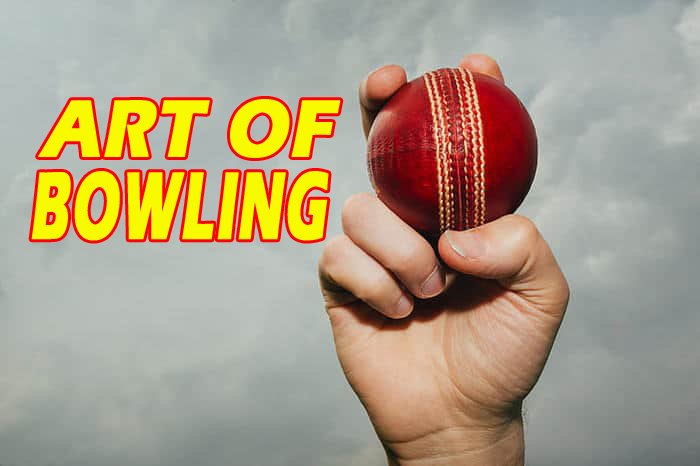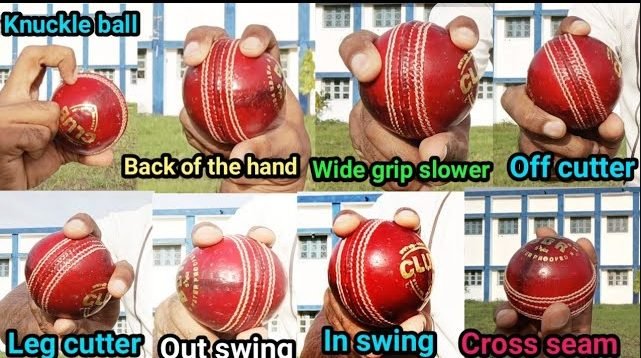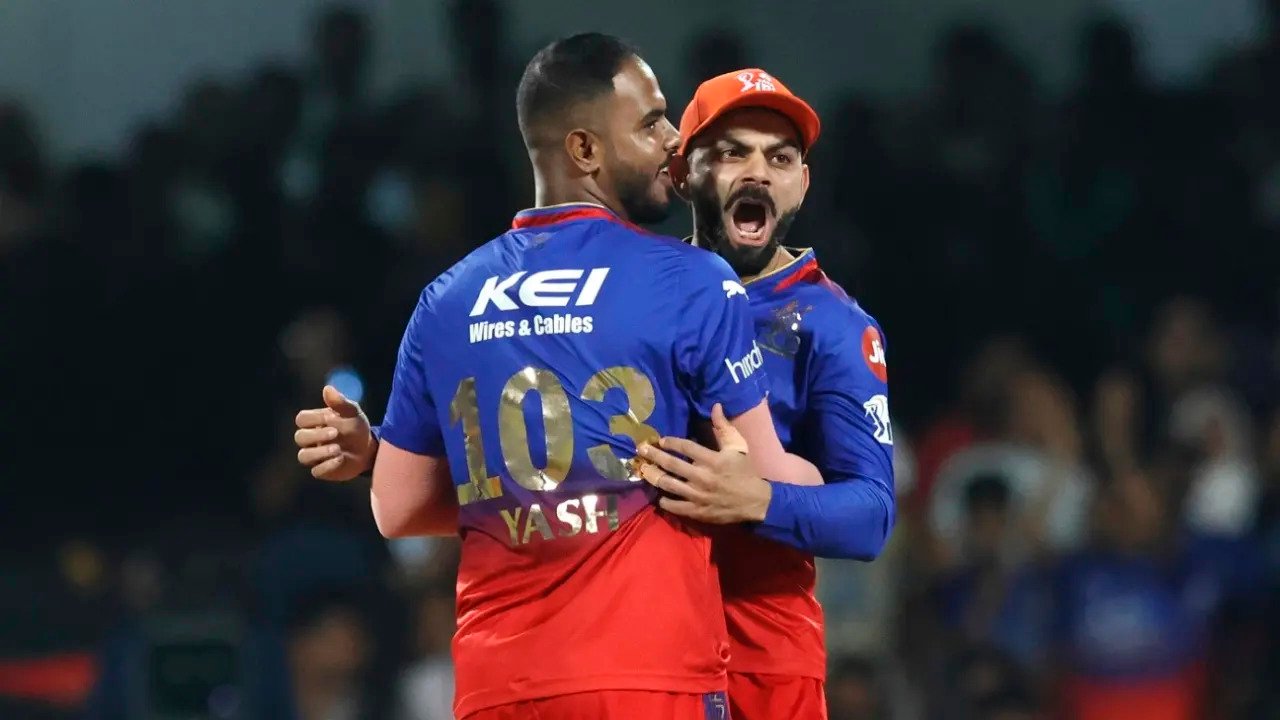The art of bowling in Cricket: Cricket, a game that has captivated millions across the globe, is a sport rich in tradition, strategy, and skill.
While batting often grabs the limelight with its flamboyant shots and towering sixes, the art of bowling is equally, if not more, crucial to the game. Bowling in cricket is not merely about hurling the ball towards the batsman; it is a finely tuned craft that requires precision, strategy, and an understanding of the batsman’s psychology. This article delves into the nuances of bowling, exploring its various types, techniques, and the strategies that make it an indispensable element of cricket.

1. The Basics of Bowling
Bowling in cricket involves delivering the ball from one end of the pitch to the other, aiming to dismiss the batsman or restrict the scoring. The fundamental objective for a bowler is to outsmart the batsman, either by inducing a mistake that leads to a dismissal or by limiting run-scoring opportunities.
Bowling can be broadly categorized into two main types: fast bowling and spin bowling. Each type requires a distinct set of skills and techniques, and within these categories, there are further specializations that add depth to the art of bowling.
2. Fast Bowling
Fast bowling is all about speed, aggression, and intimidation. A fast bowler, or pacer, relies on sheer pace to unsettle the batsman. However, speed alone is not enough; a successful fast bowler combines pace with accuracy, movement, and variation.
2.1. Techniques of Fast Bowling
Grip and Seam Position: The grip on the ball and the position of the seam are crucial for fast bowlers. The basic grip involves holding the ball with the index and middle fingers placed close together on the seam, while the thumb rests on the seam underneath. This grip allows bowlers to control the ball’s movement in the air (swing) and off the pitch (seam).
Run-Up and Delivery Stride: The run-up is the approach a bowler takes before delivering the ball. It needs to be smooth and rhythmic to build momentum. The delivery stride, where the bowler plants their front foot and releases the ball, is critical for generating pace and maintaining balance.
Swing and Seam Movement: Fast bowlers often rely on swing and seam movement to deceive batsmen. Swing is achieved by the bowler’s wrist position and the seam orientation, causing the ball to move laterally in the air. Seam movement occurs when the ball hits the pitch and deviates off the seam.
2.2. Types of Fast Bowlers
- Outswing Bowlers: These bowlers focus on making the ball move away from the batsman, inducing edges to the slips or keeper.
- Inswing Bowlers: They make the ball move into the batsman, often targeting the stumps or pads to create LBW (leg before wicket) opportunities.
- Reverse Swing Bowlers: At higher speeds and with an older ball, some bowlers can achieve reverse swing, where the ball moves in the opposite direction to conventional swing, baffling batsmen who are used to traditional swing.
3. Spin Bowling
Spin bowling, in contrast to fast bowling, relies on guile and deception rather than speed. A spinner uses finger or wrist movements to impart spin on the ball, causing it to turn sharply off the pitch.
3.1. Techniques of Spin Bowling
Grip and Release: The grip and release are vital for spin bowlers. Off-spinners grip the ball with the fingers across the seam and use their fingers to impart spin, while leg-spinners use their wrists to produce spin, holding the ball with the seam along the palm.
Flight and Drift: Spin bowlers use flight to deceive batsmen in the air. By varying the trajectory and speed of the ball, they can lure batsmen into false shots. Drift refers to the lateral movement of the ball in the air before it pitches, adding another layer of complexity.
Spin and Turn: The amount of spin and turn a bowler can generate depends on their skill and the pitch conditions. Spinners aim to turn the ball sharply to beat the bat or induce an edge.
3.2. Types of Spin Bowlers
- Off-Spinners: These bowlers spin the ball from the off side to the leg side of a right-handed batsman, aiming to deceive with flight and dip.
- Leg-Spinners: Leg-spinners turn the ball from leg to off, using their wrist to generate significant turn and bounce.
- Left-Arm Orthodox Spinners: Similar to off-spinners but bowling with the left hand, spinning the ball away from a right-handed batsman.
- Left-Arm Unorthodox Spinners (Chinaman Bowlers): These bowlers use a wrist spin similar to leg-spinners but with the left hand, turning the ball into a right-handed batsman.
4. Strategic Aspects of Bowling
Effective bowling is not just about individual skills but also about the ability to adapt and strategize according to the game situation, pitch conditions, and the strengths and weaknesses of the batsmen.
4.1. Understanding the Pitch
The pitch plays a significant role in the success of a bowler. Fast bowlers thrive on pitches with grass and bounce, while spinners prefer dry, dusty surfaces that offer more turn. Reading the pitch conditions accurately helps bowlers adjust their lengths, speeds, and variations.
4.2. Setting the Field
A well-set field complements a bowler’s strategy. For example, a fast bowler aiming for outswing might set a field with slips and gullies to catch edges. Similarly, a spinner might have close-in fielders like slips and short legs to catch bat-pad edges or miscued shots.
4.3. Variation and Deception
Constantly varying deliveries is crucial to keep batsmen guessing. Fast bowlers use bouncers, yorkers, slower balls, and cutters to disrupt the batsman’s rhythm. Spinners use variations like the googly, flipper, doosra, and carrom ball to outfox the batsman.
4.4. Psychological Warfare
Bowling is as much a mental battle as a physical one. Bowlers often engage in psychological tactics, such as staring down the batsman, strategic pauses, and even subtle sledging to break the batsman’s concentration and induce errors.
Also Read: Unveiling the Science of Cricket: Exploring Bowling and Batting Dynamics Towards Triumph

5. Great Bowlers in Cricket History
Several bowlers have left an indelible mark on cricket with their exceptional skills and records. Here are a few legendary bowlers whose careers exemplify the art of bowling:
5.1. Sir Richard Hadlee
A New Zealand fast bowler, Sir Richard Hadlee was known for his impeccable line and length, combined with the ability to swing the ball both ways. He was the first bowler to reach 400 Test wickets and remains one of the greatest all-rounders in cricket history.
5.2. Shane Warne
An Australian leg-spinner, Shane Warne revolutionized spin bowling with his prodigious turn, flight, and deceptive variations. His famous “Ball of the Century” to Mike Gatting is a testament to his genius, turning sharply from outside leg to clip the top of off stump.
5.3. Wasim Akram
Hailed as the “Sultan of Swing,” Pakistani fast bowler Wasim Akram was a master of both conventional and reverse swing. His ability to bowl deadly yorkers and sharp bouncers made him a formidable opponent in all formats of the game.
5.4. Muttiah Muralitharan
Sri Lankan off-spinner Muttiah Muralitharan holds the record for the most wickets in Test cricket. His unorthodox action and exceptional ability to turn the ball sharply made him a nightmare for batsmen worldwide.
5.5. Glenn McGrath
An Australian fast bowler, Glenn McGrath was renowned for his accuracy, consistency, and ability to extract movement from any surface. His relentless line and length made him one of the most successful bowlers in cricket history.

6. Modern-Day Bowling Innovations
The art of bowling continues to evolve with the introduction of new techniques and strategies. Modern-day bowlers constantly innovate to stay ahead in an increasingly competitive environment.
6.1. T20 Impact
The advent of T20 cricket has significantly influenced bowling strategies. Bowlers now focus more on variations and accurate execution of yorkers, slower balls, and wide yorkers to restrict runs in the death overs. The pressure of limited-overs cricket has also seen the rise of new deliveries like the knuckleball.
6.2. Fitness and Conditioning
Modern bowlers place a greater emphasis on fitness and conditioning to cope with the rigorous demands of international cricket. Enhanced fitness levels allow bowlers to maintain their pace and accuracy over extended spells and across different formats.
6.3. Data Analytics
The use of data analytics has revolutionized cricket strategy. Bowlers and coaches analyze detailed data on batsmen’s weaknesses, pitch conditions, and match situations to devise precise plans. This analytical approach helps in optimizing field placements, bowling variations, and overall game strategy.
6.4. Bio-Mechanical Analysis
Advanced technology in bio-mechanics helps bowlers refine their techniques to prevent injuries and enhance performance. Detailed analysis of a bowler’s action can identify potential issues and suggest adjustments to improve efficiency and reduce the risk of injury.
7. Conclusion
Bowling in cricket is a multifaceted art that blends skill, strategy, and mental toughness. From the raw pace of fast bowlers to the cunning guile of spinners, each type of bowler brings a unique dimension to the game. Understanding the intricacies of bowling not only enhances our appreciation of cricket but also highlights the incredible talent and dedication required to excel in this discipline. As the game evolves, the art of bowling will continue to adapt, ensuring that it remains a captivating and integral part of cricket for generations to come.





